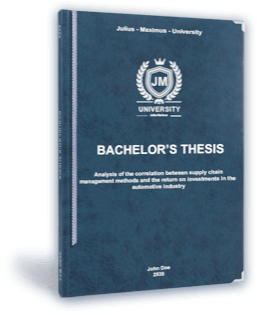
Academic writing may be challenging, but with a solid understanding of language rules and awareness of common pitfalls, it’s a skill you can master. From structural issues to stylistic missteps and grammar errors, even small mistakes can weaken your argument and affect your credibility. The good news? Most of these errors are entirely avoidable. In this guide, we’ll help you recognize common mistakes and show you how to turn them into opportunities for improvement.
Definition: Common mistakes
Common mistakes are frequent errors in academic writing that students typically overlook. These can include incorrect punctuation, awkward sentence structure, or improper pronoun usage. Even well-researched work can lose marks if such errors aren’t corrected, so careful proofreading and editing are essential. Understanding grammar rules and following proper grammar guidelines ensures a correct sentence structure, whether you’re writing a compound sentence or a simple statement.
British vs. American English
In academic writing, both British English vs. American English are widely accepted. What matters most is consistency. Switching between the two can confuse readers and weaken the professionalism of your work.
The differences mostly appear in spelling, punctuation, and vocabulary. These variations are subtle but frequent, especially when you’re referencing or quoting from international sources.
Students often mix the two variants unknowingly, especially when using online sources, grammar tools, or templates that default to a different language setting. This inconsistency is rarely intentional but can undermine your academic credibility.
Common spelling differences
Here’s an example sentence where British and American English are each used correctly, along with a false example where the variants are mixed.
Check your university’s style guides or your professor’s preferences before starting your work.
Note: Set your word processor’s language to either British or American English to automatically catch inconsistencies.
Citation terms
Correctly using citation terms is essential for academic credibility. One of the most common mistakes is the misuse of Latin abbreviations, especially et al., which means “and others.” These small errors can make your work appear careless, even if the research itself is strong.
Students often miswrite et al. because they:
- Assume it’s a proper noun (→ capitalize it)
- Don’t realize the abbreviation only applies to al. (→ incorrect punctuation)
- Use autocorrect tools that change the formatting
Et al. should always:
- Have a period only after “al.”
- Be in lowercase (unless at the start of a sentence)
- Be followed by a comma (in most styles) before the year
Other commonly misused terms are:
- Ibid. (used for repeated citations of the same source)
- Cf. (used to compare sources, not as a synonym for “see”)
Note: Use a reference manager (like Zotero, Mendeley, or EndNote) and select your citation style (APA Style, MLA, Chicago Style, etc.) to avoid these common mistakes.
Quantifiers
Quantifiers indicate how much or how many, but they’re often used imprecisely in academic writing. Common mistakes include using vague terms, combining quantifiers with the wrong noun type (countable vs. uncountable), or choosing informal expressions unsuitable for an academic tone.
Students tend to rely on everyday language habits to translate directly from their native language. Phrases like “a lot of” or “a bunch of” may be fine in speech, but they sound too casual or are grammatically incorrect in formal writing.
Countable vs. uncountable
Use many, a few, several with countable nouns:
✅ Many theories, a few experiments
Use much, a little, an amount of with uncountable nouns:
✅ Much evidence, a little time
Note: Avoid quantifiers like “a lot,” “tons of,” or “plenty of” in formal writing. Be specific when possible: use “three factors,” “a handful of studies,” or “over 60% of participants” instead.
Nouns & plurals
Common errors in academic writing also occur with nouns and plurals, especially with irregular nouns and technical terms. Using the wrong plural form can make your writing look careless and even confuse your readers.
Many academic terms come from Latin or Greek and don’t follow standard plural rules. Students often apply regular “-s” endings to words that have unique plural forms, or confuse singular and plural versions of similar-looking words.
When in doubt, check a reliable academic dictionary or glossary in your field. Misusing plural forms in scientific or technical writing can affect your credibility.
Note: Watch out for words like “data,” “media,” and “criteria.” These are plural forms, though they’re typically treated as singular in casual use.
Punctuating numbers & dates
Incorrect punctuation in numbers and dates is a subtle but common mistake in academic writing. It often results from regional differences or automatic formatting tools and can confuse readers or distort data.
Many students mix up European and American number formats or incorrectly use apostrophes in dates. This usually happens when switching between language settings or copying from different sources without standardizing the format.
- Use commas to separate thousands: 1,000 (not 1.000)
- Do not use apostrophes in decades: 1990s (not 1990’s)
- Follow your institution’s style guides for dates:
- 10 May 2024 (British)
- May 10, 2024 (American)
Note: If you’re using Excel or automated tools to insert data or numbers, double-check that the number format matches the academic style you’re following (APA, Chicago, etc.).
Adjectives
Common mistakes of adjectives involve using the wrong form, incomplete compound adjectives, or unnecessary modifiers. These common mistakes can make your writing sound awkward, unclear, or less professional.
Students frequently confuse adjective forms (e.g., politics vs. political) or forget to hyphenate compound adjectives. This is especially common when translating thoughts from another language or writing too quickly without revising.
Use “especially” for emphasis, not “specially,” unless you’re highlighting something done for a specific purpose!
Furthermore, use a hyphen when two or more words function as a single adjective before a noun:
- Fact based argument → Fact-based argument
- Well known author → Well-known author
Note: After writing, do a quick scan for adjectives. If a phrase sounds off, check if you’ve used the right form or need a hyphen.
Verbs & phrasal verbs
Verbs and phrasal verbs are integral to academic writing but are often misused. Common mistakes include using the wrong verb tense, confusing verb forms, or incorrectly combining verbs with prepositions (phrasal verbs).
Students often confuse similar-sounding verbs or misuse verb tenses. Phrasal verbs (verbs combined with prepositions or adverbs) can also be tricky, as their meaning changes with context.
Phrasal verbs are often used incorrectly, especially when students mix up similar expressions or misuse them in academic contexts. For instance:
- Make up (to invent) vs. make (to create something tangible)
- Look into (to investigate) vs. look at (to observe without deep investigation)
Note: When using phrasal verbs, be mindful of the tone. Some, like “get over” or “give up,” are informal. In academic writing, it’s usually better to use more precise verbs like “overcome” or “abandon.”
Words that are mixed up
Certain words in English are commonly confused due to their similar pronunciation or meaning. These common mistakes can create confusion in academic writing and make your argument harder to follow.
Many students rely on similar-sounding words or translate phrases from their native language without checking for subtle differences in meaning. It’s easy to make these common mistakes when words seem interchangeable, but they can lead to misunderstandings or weaken the clarity of your writing.
It’s common for students to mix up certain words, especially those that have similar pronunciations, such as:
Note: When unsure, look up the definitions to verify the word’s correct use. Context is key: read your sentence carefully and ask if the word truly fits the meaning you intend to convey.
If you’d like to learn more, we have a dedicated category for these types of word pairs.
Conjunctions & prepositions
Conjunctions and prepositions are essential in connecting ideas and clauses, but they can be tricky. Incorrect use of conjunctions or prepositions often leads to awkward or unclear sentences.
Students tend to rely on their intuition or apply rules from their native language without considering the differences in English. Additionally, some conjunctions and prepositions are used in specific idiomatic expressions, making them harder to use correctly.
Be careful with verbs commonly followed by prepositions, as they may not always translate directly into your language. For example, in English, we say “interested in” (not interested on) or “rely on” (not rely over).
Note: When in doubt, check common prepositional phrases or look up conjunction rules to ensure you’re using them correctly. A quick review will help you write more clearly and avoid confusing your readers.
Sentence fragments & run-ons
Sentence fragments and run-on sentences (also called fused sentences) are common mistakes in academic writing that can disrupt the flow of ideas. These errors often go unnoticed during writing, but they can confuse readers and diminish the quality of your work.
Sentence fragments occur when a part of a sentence is missing a subject or verb, leaving the thought incomplete. Run-on sentences happen when two independent clauses are improperly joined, creating long, confusing sentences. These common mistakes happen when writers are in a rush or don’t properly revise their drafts.
Tips for avoiding fragments:
- If a sentence starts with a conjunction, ensure it’s followed by a complete thought.
- Check that each sentence has both a subject and a verb. If it doesn’t, you may have a fragment.
Tips for avoiding run-ons:
- Use punctuation and conjunctions to separate independent clauses properly.
- If two clauses are closely related, use a semicolon or break them into two sentences.
Note: After writing, read your sentences aloud. If you stumble or feel a thought is incomplete, it’s a sign that a sentence might be a fragment or run-on.
Passive vs. active voice
The use of passive voice and active voice is a key decision in academic writing. While both are grammatically correct, overusing the passive voice can make your writing sound distant, vague, and less engaging.
Often, students are taught to use passive voice when the focus should be on the action rather than the subject. While passive voice is common in scientific writing (where the focus is often on processes or results), excessive use can weaken the clarity and engagement of your argument.
When to use passive voice
- When the actor is unknown/irrelevant:
The experiment was conducted. - Indicate the focus is on the process/result:
The drug was administered to the patients.
When to use active voice
- To make writing more direct and engaging
The team conducted the study. - To make it clear who is responsible for the action:
The researchers analysed the results.
Note: Aim to use active voice where possible to keep your writing clear and dynamic. Use passive voice when necessary, but avoid overuse. A good balance will strengthen your argument.
numerous advantages for Canadian students:
- ✓ 3D live preview of your configuration
- ✓ Free express delivery for every order
- ✓ High-quality bindings with individual embossing

Checklist
To help you identify and avoid common mistakes in your academic writing, we’ve created a comprehensive checklist. This will guide you through essential aspects such as grammar, punctuation, and structure, ensuring your work is both clear and professional.
Use this checklist during your writing process or before submitting your final draught to make sure all key elements are in place. For your convenience, we’ve provided the checklist in both PDF and MS Word formats, which you can download and use for easy reference.
FAQs
The most common mistakes in writing are grammatical errors from incorrect punctuation, spelling, and word groups. They also include misuse of phrases and confusing similar words.
Proofreading and revising are the best ways to find errors. Moreover, confirm the correct forms of words and spellings before using them.
There are different spellings for certain words in these forms of writing. For instance, the use of “s” and “z” may vary, such as analyse and analyse.
Use a comma in the right place to show a number correctly. For instance, write 10,000, not 10.000.